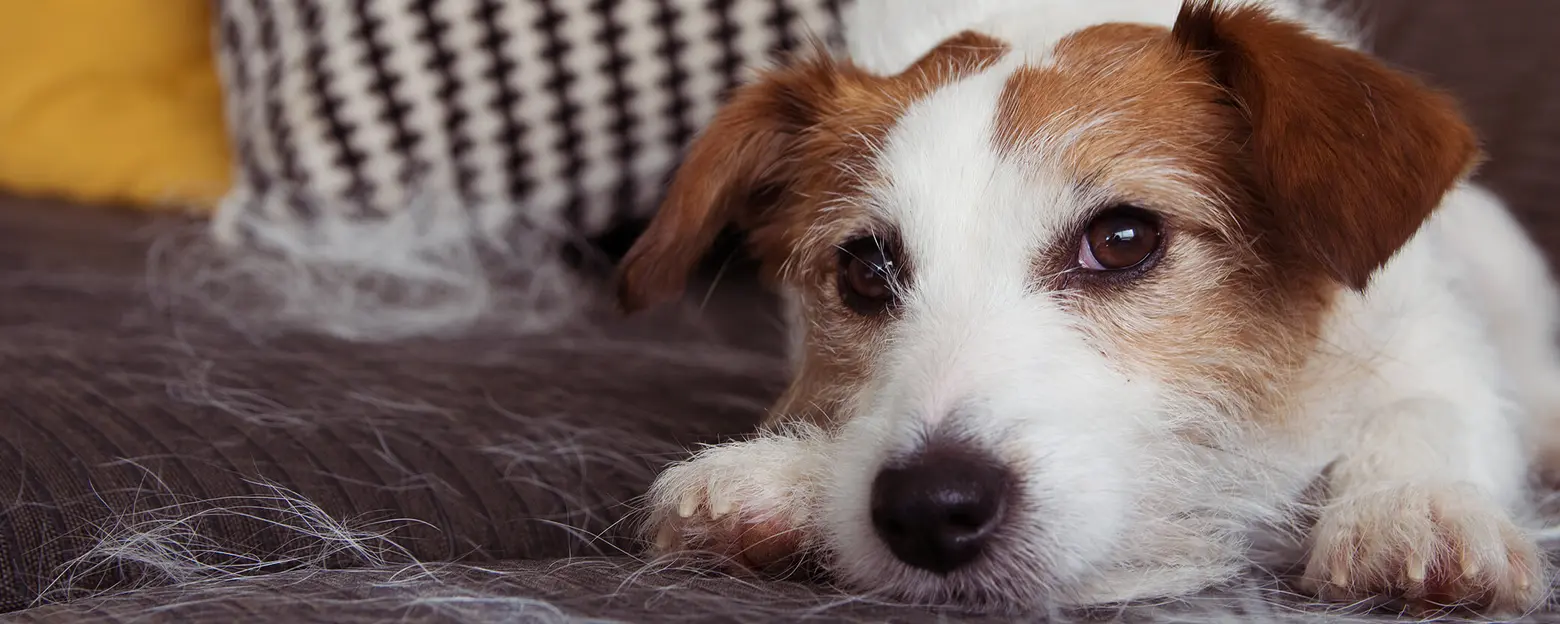Spring coat change
The first annual coat change in dogs takes place in spring when the temperatures become warmer and can therefore take place at slightly different times from year to year. In total, the change of coat can take between six and eight weeks. In spring, dogs shed their hair the most, because this is the time when they shed the dense winter coat.
Coat change in autumn
It may seem that the dog's coat simply becomes thicker and grows more in autumn - however, these are also the signs of the second coat change. As temperatures drop, dogs lose the airy summer coat. This is replaced by a much denser winter coat. This is why many dogs do not shed as much in autumn as they do in spring. The warm undercoat becomes denser and the summer outer coat less.
What care do dogs need during the change of coat?
The right nutrition and intensive coat care are of central importance during the change of coat. You can support your dog during the coat change by brushing regularly. Brushing improves blood circulation and removes the loose fur that has already fallen out. Coat care should ideally be based on the type of coat. A distinction is made between five types of dog coat: short-haired, long-haired, wire-haired, silky, curly and smooth. Dogs with curly and non-hairy coats should be brushed two to three times a week. Wire-haired, smooth-haired or long-haired breeds with a lot of undercoat should be treated with a suitable brush at least once a week. For dogs with silky coats, even daily brushing is recommended.
Some dog breeds, e.g. Poodles or Yorkshire Terriers shed almost no hair and are therefore considered particularly allergy-friendly. However, these dogs require special treatment during the shedding period: the coat of a Poodle or Yorkshire Terrier grows until it is shorn or trimmed.
The right diet makes the difference
To support your dog during the coat change in addition to the daily coat care, an adjustment of the diet can also be helpful. A protein-rich diet and plenty of vitamin B, zinc and biotin are recommended to promote the skin metabolism. These supplements not only help the dog with the coat change, but also generally ensure a shinier coat and better skin. Biotin in particular strengthens the hair, alleviates skin complaints and ensures strong claws. If the dog is prone to skin irritation during the change of coat or if the skin forms more dandruff, a vet should be consulted. Normally, however, the change of coat can be managed well with a combination of coat care and a healthy diet.

